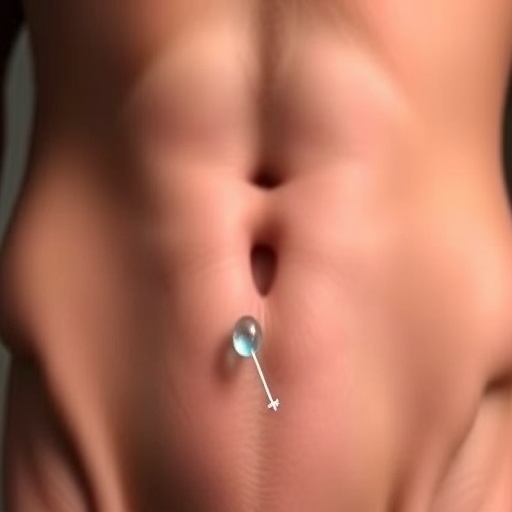In a groundbreaking study poised to reshape pediatric leukemia treatment strategies, researchers have unveiled compelling evidence highlighting the crucial role of urine output in optimizing the clearance of high-dose methotrexate (HD-MTX) therapy. This investigation, recently published in BMC Cancer, meticulously examines how variations in urine output can significantly influence the duration it takes for methotrexate—a potent chemotherapeutic agent— to be eliminated from the bodies of children battling acute lymphoblastic leukemia (ALL). The clinical implications of these findings could herald a shift towards more personalized supportive care protocols aimed at minimizing toxicities and hospital stays.
Methotrexate remains a cornerstone in the therapeutic arsenal against pediatric ALL, primarily due to its efficacy in eradicating malignant lymphoblasts. However, the administration of HD-MTX is fraught with challenges, most notably the risk of delayed drug clearance, which can precipitate severe toxicities involving renal, hepatic, and mucosal tissues. To mitigate these risks, hydration protocols are ubiquitously employed to enhance renal excretion of methotrexate, yet the quantifiable relationship between the volume of urine produced and the efficiency of MTX clearance has paradoxically remained underexplored until now.
The retrospective study, orchestrated by a team at Chang Gung Memorial Hospital, retrospectively analyzed 39 pediatric ALL patients who received HD-MTX treatment between August 2023 and February 2025. Patients were dichotomized into high urine output (H-UO) and low urine output (L-UO) cohorts based on a clinically relevant threshold of 5.0 mL/kg/hr. This approach facilitated a granular assessment of how urine volume directly correlates with the pharmacokinetics and toxicity profiles of methotrexate within this vulnerable population.
Findings from this study constitute a pivotal advance in understanding the physiological determinants of methotrexate elimination. The results demonstrated that patients in the H-UO group achieved significantly faster methotrexate clearance, with median clearance times of just 2.0 days, compared to 4.0 days observed in the L-UO group. This pronounced disparity was statistically significant and suggests that elevated urine output substantially accelerates the renal clearance mechanisms critical for safe methotrexate metabolism.
Additionally, the incidence of delayed clearance—a clinical scenario characterized by elevated plasma methotrexate levels beyond the anticipated timeframe—was markedly reduced in the H-UO group, with frequency rates of 18.2% compared to an alarming 70.6% in the L-UO group. This correlation underscores the potential of urine output as a predictive biomarker for delayed methotrexate elimination and consequently, as a modifiable factor to enhance treatment safety.
Hospitalization duration also mirrored these clearance efficiencies, where the H-UO cohort experienced shorter hospital stays averaging 5.0 days, significantly less than the 7.0 days reported for their low urine output counterparts. Shortened hospitalization not only benefits patient quality of life but also alleviates healthcare resource utilization, emphasizing the broader impact of urine output management on pediatric oncology care systems.
The study further noted that the L-UO group required heightened intervention with adjunctive diuretics, which were largely employed as reactive measures rather than proactive strategies to augment urine flow. Despite this, no statistically significant difference in the occurrence of major methotrexate-related toxicities was observed between the groups, suggesting that diuretic interventions did not effectively mimic the benefits of naturally higher urine output.
These insights compel a re-examination of existing hydration and diuresis strategies in pediatric HD-MTX administration. The physiological basis for enhanced clearance via increased urine production likely involves more efficient renal elimination pathways, minimizing systemic exposure to methotrexate and thereby mitigating toxicity risk. Nevertheless, the physiological mechanisms remain an open frontier for further elucidation, inviting prospective research to explore renal hemodynamics, tubular function, and systemic fluid balance in this context.
One of the compelling strengths of the study lies in its real-world applicability, drawing data from a well-defined clinical cohort treated under uniform institutional protocols. However, the retrospective design necessitates caution in causal inference, pointing to the imperative need for prospective randomized controlled trials to validate and expand upon these findings.
Beyond its immediate clinical ramifications, this research elevates the discourse on personalized medicine in pediatric oncology, where nuanced patient monitoring and tailored supportive care can be leveraged to optimize therapeutic efficacy and safety. The prospect of integrating urine output metrics into clinical decision-making algorithms could revolutionize how clinicians manage methotrexate dosing and hydration regimens.
Moreover, the study’s revelations may catalyze innovations in drug monitoring technologies, potentially enabling continuous urine output tracking coupled with real-time methotrexate plasma level assessments. Such advancements could empower healthcare providers to anticipate clearance trajectories and adjust interventions dynamically, diminishing the risk of adverse events.
In concluding, the authors advocate for well-designed prospective investigations to refine supportive care protocols further. Emphasizing urine output as a modifiable and measurable parameter presents an actionable target to enhance treatment outcomes and reduce healthcare burdens associated with high-dose methotrexate therapy.
This exploration marks a pivotal step towards safer and more effective remission strategies for pediatric ALL, reinforcing the critical interplay between pharmacokinetics and patient-specific physiological variables. As pediatric oncology continues to evolve, such insights champion the integration of holistic patient management paradigms alongside cutting-edge therapeutics.
Ultimately, optimizing urine output may not merely be a supportive care adjunct but a cornerstone in the precision management of methotrexate therapy, elevating standards of care and patient safety in pediatric hematology-oncology worldwide.
Subject of Research: Investigating the impact of urine output on the time to methotrexate clearance in pediatric acute lymphoblastic leukemia patients undergoing high-dose methotrexate therapy.
Article Title: The relationship between urine output and time to methotrexate clearance in pediatric leukemia patients receiving high-dose methotrexate therapy.
Article References:
Wang, YL., Chang, Y., Chen, SH. et al. The relationship between urine output and time to methotrexate clearance in pediatric leukemia patients receiving high-dose methotrexate therapy. BMC Cancer 25, 1545 (2025). https://doi.org/10.1186/s12885-025-15064-1
Image Credits: Scienmag.com




